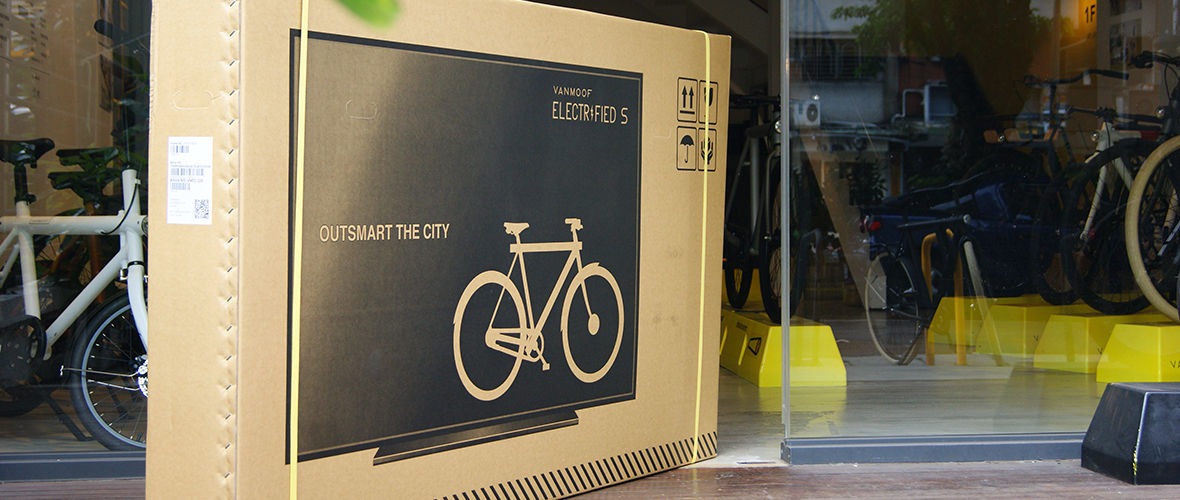Behavioural Insights and Marketing: Why you should use them and who is doing it well
User and audience research | 7 MIN READ
I recently ran a Bitesize training session for Fresh Egg, where I introduced the attendees to the concept of using behavioural insights with marketing activity, including how to apply a simple behavioural model called "COM-B" to their thinking. I've collated some examples of where behavioural insights have been used successfully in marketing campaigns and other activities, so I thought it would be good to capture some of these in this post and look at some of the backgrounds around this fascinating topic.
The likes of Amazon, Netflix, Starbucks, Subway, British Airways and TikTok have all fully embraced the idea of understanding and learning about the behaviour of their customers and using it to influence how they market to them.
David Somerville, Strategy Director

What are Behavioural Insights?
According to the OECD, behavioural insights are "an inductive approach to policymaking that combines insights from psychology, cognitive science and social science, with empirically-tested results to discover how humans make choices".
The word "policymaking" is used in the above definition due to the prevalence of behavioural insights in use by over 200 international social and health organisations and governments to find ways of improving the lives of others.
In the UK, the Behavioural Insights Team (also known as the Nudge Unit) has applied behavioural techniques to challenges such as increasing organ donors or sign-ups to the British Army.
However, in marketing, this approach is also in use (with great success). Many leading brands now adopt the theories, frameworks, and models to help (in theory) improve their customers' experiences. The likes of Amazon, Netflix, Starbucks, Subway, British Airways and TikTok have all fully embraced the idea of understanding and learning about the behaviour of their customers and using it to influence how they market to them.
Why do they work well with marketing?
Behavioural insights are proven to work well in health and social situations to learn more about how people make decisions and then help them to choose what’s right for them.
Here are some reasons why that I think that it’s a perfect partner for marketing:
- It makes you focus on the behaviour you want to influence – understanding this is key to understanding what you can do to change or optimise things for the better.
- It puts people (your customers/users) at the heart of everything – creating marketing activity based on your customers’ needs, behaviours, and goals is likely to resonate much better than when you decide what users want.
- There are behavioural cues evident in numerous data sources – there is a plethora of data at your fingertips right now, from web analytics to CRM or search data. Used in the right way, this can provide insight about your customers.
- It fits with a ‘test and learn’ marketing approach – behavioural insights are a �‘science’ (technically a branch within the overall behavioural science discipline). For marketers, this means you need to be testing, learning and iterating, helping to avoid wasted time and budget.
Key behavioural insight principles
Numerous different principles are available to help enable choices and allow people to make decisions. The principles work with the various cognitive biases that we have as humans – these are subconscious errors that happen in thinking, making us misinterpret the world around us. Understanding these and then applying principles to help try and smooth out the biases enables better choices for humans.
Here are a few of the primary principles often used within marketing:
Priming
Priming occurs when exposure to one stimulus automatically influences a response to a subsequent stimulus without any need for further conscious guidance. Priming often happens when people encounter words or images that they are used to seeing regularly.
The power of ‘free’
Behavioural economist Dan Ariely conducted research that showed that when presenting people with something that is 'free', they will often choose it, as opposed to when something is 'almost free'. Despite having no cost attached, people can place as much value on these as they would if there was a price on them.
Social proof
Social proof works on the notion that people will often respond to a recommendation by other people, including family, friends, peers or other 'influencers', including celebrities, experts or users/customers of a brand.
Scarcity
Defined by Dr Robert Cialdini, the scarcity principle states that something will become more valuable or desired to a person if it is in short supply or could run out soon. It’s derived from a basic economic principle where a reduction in supply and increase in demand can drive up prices. Scarcity in marketing is often not related to pricing, but effective use can encourage purchase.
Framing
The framing effect is the principle that we make choices based on how they are 'framed' with words or in specific settings or situations. There are several types of framing, including auditory framing, visual frames, value frames and positive or negative frames (is it a 'gain' or a 'loss'?).
Anchoring
The anchoring effect states that a particular reference point (or 'anchor') often influences our decisions. An anchor is typically the first bit of information we learn or have exposure to in this context.
Think back to when you last bought or rented a new property – you will typically compare everything you view back to the first property you viewed to see whether it is as good (or bad in some cases). Several anchoring techniques are used, including original vs discount price, monthly vs annual plans, and multiple-unit pricing.

Look EAST - behavioural insights to improve customer experience
Download our FREE white paper that explores how the popular EAST behavioural insights framework can work for marketing and transform your customer experience (CX).
6 examples of behavioural insights and marketing
Let’s have a look at examples of brands that are applying some of these principles to their marketing.
Vanmoof Bike Boxes (Priming)
In 2015 Dutch bike brand Vanmoof started shipping their bikes to customers in the US. However, courier companies seemed not to take as much care as they should do when delivering them. Unfortunately, this led to bikes getting damaged and Vanmoof having to pay out for new bikes to be shipped again.
They came up with the simple but genius idea of printing a picture of a TV on the side of the box – the boxes were the same size and shape as for large flat-screen TVs. Because delivery drivers associate flat-screen TVs as 'fragile', they are primed to treat these boxes the same way. The image of the TV helps to nudge their brains along the way.

Credit - https://www.vanmoof.com/blog/en/tv-bike-box
Overnight they saw reported shipping damages drop by 70-80%, and this continued to be the case for many years to come.
Starbucks Happy Hour (The Power of ‘Free’)
The 'BOGOF' concept (Buy-One-Get-One-Free) is an established sales promotion technique and one that consumers know well. However, it still works well, mainly because everyone seems to love something for free.
Starbucks is just one brand taking advantage of this consumer craving, with promotions like the 'Starbucks Happy Hour' tickling the tastebuds of their customers.

Those with their app installed can take advantage of the offer, and they use push notifications to remind people, pushing those synapses even more.
Netflix harnesses herd mentality (Social proof)
Netflix is one of the leading proponents of using behavioural insights to help grow the usage of their service. They use social proof in several ways, including displaying 'review stars' within the listings descriptions.
They also use the power of the crowd by curating lists of titles into categories such as 'Popular on Netflix' or 'Top 10 Shows in the UK'. These lists are prominently displayed, for example, on the app's home screen when a user opens it.

Supreme’s limited availability (Scarcity)
Scarcity is a tactic often used within the travel industry, with the likes of Booking.com employing it with their "Only XX rooms available at this price" messaging.
Other industries are also using this technique to drive demand amongst customers, such as skateboarding lifestyle brand Supreme. They have developed a considerable follower base over the past few years by releasing their clothing and accessories in 'limited drops' on specific dates. The number of items available is limited too, therefore further increasing the frenzy for their products. This practice has spawned community websites, where discussions centre around releases and collaborations, plus even 'bots' you can buy to help you try and get your hands on the items as soon as the items drop.
Sensodyne is number 1 (Framing)
Numerous brands use framing successfully to position their products in the right way, with one of those being the toothpaste brand Sensodyne. They have previously used positive framing adverts with wording such as "9 out of 10 dentists recommend Sensodyne toothpaste". Currently, they are promoting the fact that Sensodyne is the "#1 dentist recommended brand for sensitive teeth".

As is often the case with the 'data' that backs up these claims from brands, the survey size can be relatively small with the brand conducting the research themselves. However, the headline itself is enough to give people the confidence that they should purchase it.
Asda – the more beer, the better (Anchoring)
Anchoring is something that many supermarkets do to drive sales, but in this example, Asda offers customers a much lower price to buy three boxes of beer rather than just buying one. Now you might have only wanted to buy one, but the framing of "3 for £21" makes you think twice when you now look at the price of buying only one. Arguably they are rewarding you here for buying more by giving you a better price, but if you only really needed one box of beer, then you can end up spending more than you wanted to in the first place.

Don’t be evil
We can use Google's (former) unofficial motto of "Don't be evil" as a final note on the use of behavioural insights within marketing.
Unfortunately, there are cases where organisations emphasise 'coercion' or use tricks to try and get people to do something they didn't want to.
When you think about applying some of the thinking discussed above to your activity, then make sure you consider how you will be enabling CHOICE for your customers and HELPING them.
I've written more about the ethics of persuasion in this blog post.
If you’re interested in finding out more about how we can help you apply behavioural thinking to your marketing activity, then please get in touch. You can also read more about another behavioural insights model – E.A.S.T. – in this free downloadable guide (see what I did there?!).